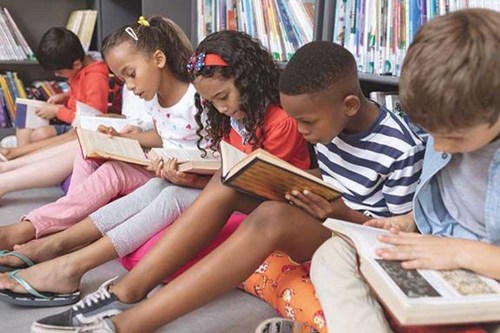Dewey, do we have a reading problem?
Published 12:00 am Monday, November 1, 2021

- Reading problem
This summer I received an email from the state library announcing an opportunity for rural librarians to write a letter, demonstrating they could put $5,000 dollars to good use, helping children improve reading scores. It felt like easy money. Of course, I could put that money to work. Helping people develop a passion for reading is one of the primary reasons libraries exist, and, heck yeah, I work in a rural district!
My fingers pretty much flew to the keys and I had my letter submitted the same day I saw the post. A few weeks later I received a call inviting me to an interview to be moved along in the selection process. When the interview crossed the one-hour mark, I realized I might have applied for something a little bigger than I originally anticipated. Apparently, I missed the fine print. The fine print being that the $5,000 was part of a two-year Rural Library Fellowship hosted by Partners for Education. They weren’t just going to give me the money, they were going to teach me how to use it. And here I thought four years attaining a bachelor’s degree and two years to earn my master’s was the last I would see of lectures and group projects.
When the interview ended I was sweating bullets and pretty sure I would instantly be crossed off the list. No one wants to listen to me talk for an hour, and that is pretty much what I had just done. A few weeks later, however, I got the call that I would be one of 22 rural librarians across the country invited to participate in the fellowship.
Our goal: To improve third grade reading scores in our communities. I have now attended four fellowship meetings, each designed to teach us how to measure the problem in our unique area of the country. So what is our problem?
According to standardized test results from the 2020-2021 school year, only 35.8 percent of 3rd grade students in the Pendleton School District are reading at grade level.
Now, is a COVID year really the best time to assess student progress? Probably not. Participation in the tests was lower than usual and students spent less time in the classroom than previous years. However, when you look back at 3rd grade reading levels in 2018-19, (the last normal school year) the problem was still prevalent. At that time only 42 percent of Pendleton 3rd graders were reading at grade level, a full five percent lower than the state average.
Maybe you are thinking that 3rd grade is an arbitrary time to determine a student’s proficiency in reading, but it is actually a crucial mile marker for student success. Up until the 3rd grade students are learning to read. After 3rd grade students are expected to read to learn. If a student can’t master reading fluency, they begin to fall behind in everything, not just reading.
Here is a depressing statistic to help drive this idea home. According to the campaign for grade level reading, one in six children who are not reading proficiently in 3rd grade do not graduate high school on time, a rate four times higher than that of proficient readers.
And you guessed it, those living in poverty, and those who check the box for multi-racial or anything but Caucasian really, are coming in with the lowest percentage of proficient readers. Pendleton is not an outlier.
I have my work cut out for me, as does the school district, and you, the parents reading this article and hopefully reading to your children each evening.
So far, my fellow librarians and I have discussed more about the problem than we have the solution. But over the next two years I will be learning new ways to make an impact for our readers and I look forward to sharing that information with educators, community stakeholders, and parent guardians along the way.
Stay tuned.









